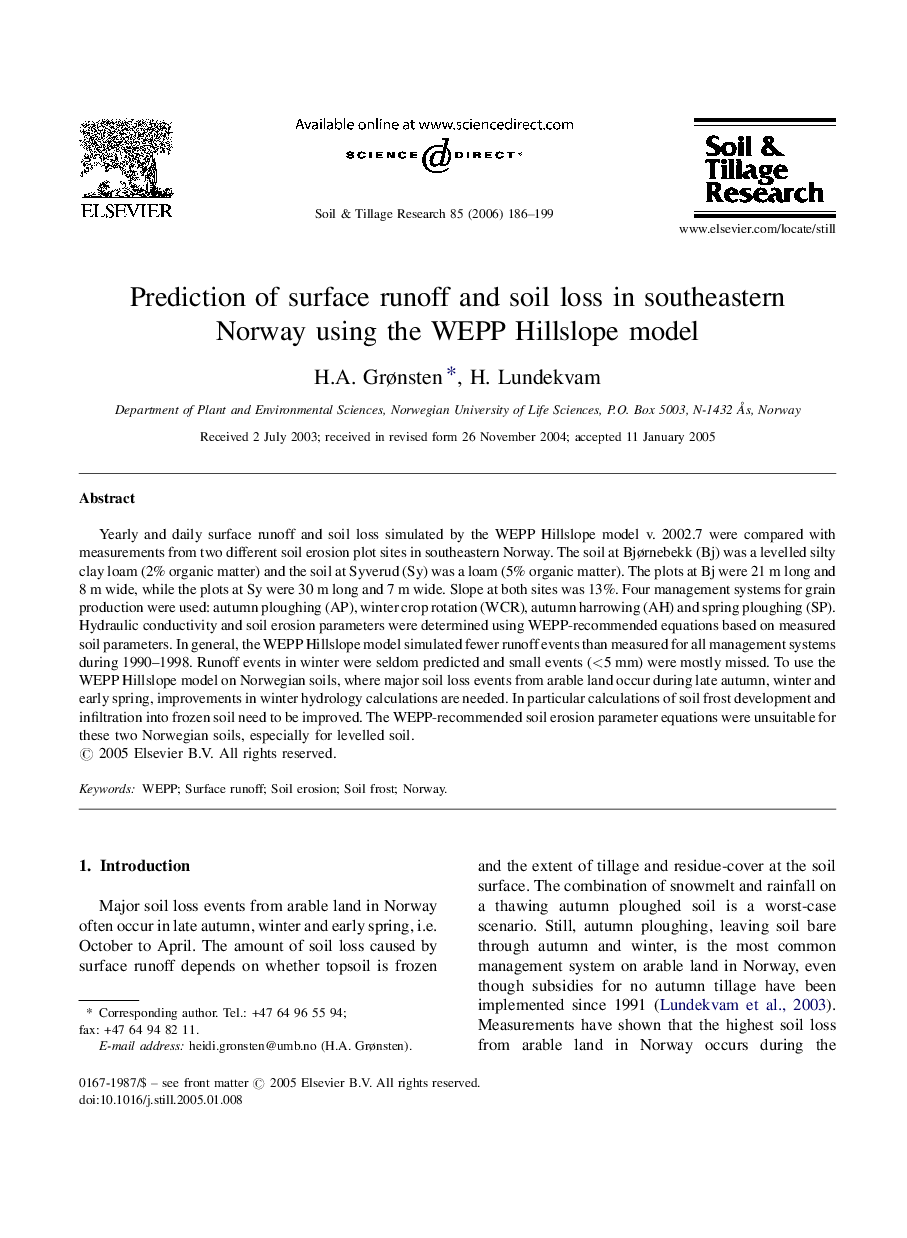| کد مقاله | کد نشریه | سال انتشار | مقاله انگلیسی | نسخه تمام متن |
|---|---|---|---|---|
| 306935 | 513125 | 2006 | 14 صفحه PDF | دانلود رایگان |

Yearly and daily surface runoff and soil loss simulated by the WEPP Hillslope model v. 2002.7 were compared with measurements from two different soil erosion plot sites in southeastern Norway. The soil at Bjørnebekk (Bj) was a levelled silty clay loam (2% organic matter) and the soil at Syverud (Sy) was a loam (5% organic matter). The plots at Bj were 21 m long and 8 m wide, while the plots at Sy were 30 m long and 7 m wide. Slope at both sites was 13%. Four management systems for grain production were used: autumn ploughing (AP), winter crop rotation (WCR), autumn harrowing (AH) and spring ploughing (SP). Hydraulic conductivity and soil erosion parameters were determined using WEPP-recommended equations based on measured soil parameters. In general, the WEPP Hillslope model simulated fewer runoff events than measured for all management systems during 1990–1998. Runoff events in winter were seldom predicted and small events (<5 mm) were mostly missed. To use the WEPP Hillslope model on Norwegian soils, where major soil loss events from arable land occur during late autumn, winter and early spring, improvements in winter hydrology calculations are needed. In particular calculations of soil frost development and infiltration into frozen soil need to be improved. The WEPP-recommended soil erosion parameter equations were unsuitable for these two Norwegian soils, especially for levelled soil.
Journal: Soil and Tillage Research - Volume 85, Issues 1–2, January 2006, Pages 186–199